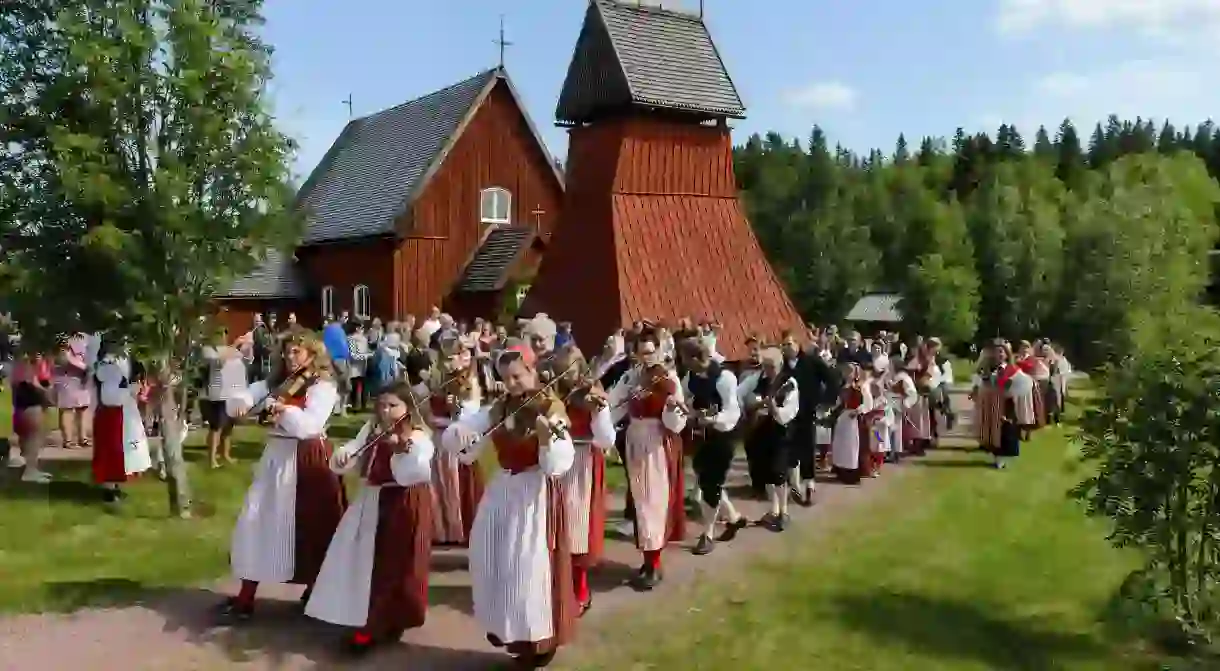A Brief History of Sweden’s Midsummer Festival

Sweden’s Midsummer (‘Midsommar’ in Swedish) is the quintessential summer celebration and something that people look forward to throughout the year, especially during the long, dark Scandinavian winters. Here’s all you need to know about the second most important holiday of the year (after Christmas), which is always celebrated close to the summer solstice.
Historic Swedish festival
According to Sweden’s Nordic Museum, Midsummer celebrations originally developed from a Christian holiday for John the Baptist, which took place on 24 June. Rather than having Midsummer always fall on a different day of the week, it was decided in 1953 that it should always be on the Friday between 20 and 26 June. Though Midsummer itself wasn’t celebrated in pagan, pre-Christian times, it’s likely there were other ceremonies and celebrations dedicated to the summer solstice. The iconic midsommarstång, or maypole, which is at the centre of the festivities, actually originated in Germany, most likely in the late 17th or early 18th century. People might tell you it’s a phallic symbol and that the holiday was originally meant to celebrate fertility, but there’s no evidence that this was the case – although it makes for a better story.

The midsommarstång is usually decorated with green garlands and flowers and placed within a prominent space in town for people to dance around. Historically, there were also plenty of notions about the magic of Midsummer. People thought that plants were especially magical that night and that supernatural beings were at their most active, which made it a perfect time to collect healing plants and try to predict the future. Also, rolling around naked in the dew on Midsummer morning was said to be good for your health.
Midsummer events
The Midsummer celebrations usually start around noon, when friends and family gather in the nearest park or archipelago to enjoy a small picnic. The maypole stands tall in the middle of the park, and the festivities begin. It’s customary to dance around the pole, and sometimes the first dance is done by a troup wearing traditional dress before everyone else is invited to join in. Make sure to take part in the Små grodorna (The Little Frogs) dance, when people jump around the pole pretending to be frogs – it has to be experienced to be believed.

Later in the afternoon, it’s time for a long, leisurely lunch. For many Swedes, the Midsummer lunch is the best food of the year, though it’s similar to the food eaten at Easter and Christmas. Must-haves are gravlax or salmon, new potatoes with dill, sour cream and chives, and, of course, sill (pickled herring). Sill is traditionally eaten on Swedish holidays, and there are usually a few different varieties, with many Swedes making their own versions rather than buying it. Other favourites include skagenröra (a tasty mix of prawns, mayonnaise, crème fraiche, lemon and dill) and västerbottenpaj (a cheese quiche).

Celebrations continue into the evening and night with drinks and games outdoors. Tradition calls for beer and shots of different kinds of snaps, usually akvavit or vodka. It’s also common for people to make snaps, flavouring it with, for example, elderflower, lemon or different herbs. There’s an old tradition to observe in the evening, too – if you collect seven different flowers and put them under your pillow on Midsummer Eve, you’re said to dream about your true love.
Where to celebrate Midsummer in Sweden
Midsummer not only brings communities together, as it usually takes place outdoors in parks and community spaces, but it’s also an opportunity to show tourists and newcomers a classic Swedish celebration. If you’re visiting Sweden and want to experience a traditional Midsummer, the countryside may be your best bet. Sammilsdal in Leksand in Sweden’s central region, Dalarna, is known for having the largest Midsummer celebration in the world – it attracts 20,000 people.

If you get the chance to experience Midsummer in one of Sweden’s archipelagos – in Göteborg or Blekinge, for example – you’ll truly get a taste of the best of Swedish summer. However, you can celebrate the holiday just as well in the city. In Stockholm, Skansen – the world’s oldest open-air museum – hosts a three-day Midsummer celebration, and many Swedish cities have events in city parks. Wherever you are in Sweden during the holiday weekend, there’s sure to be a celebration close to you that goes from midday and far into the long, light summer night.














